Towers, Croatia
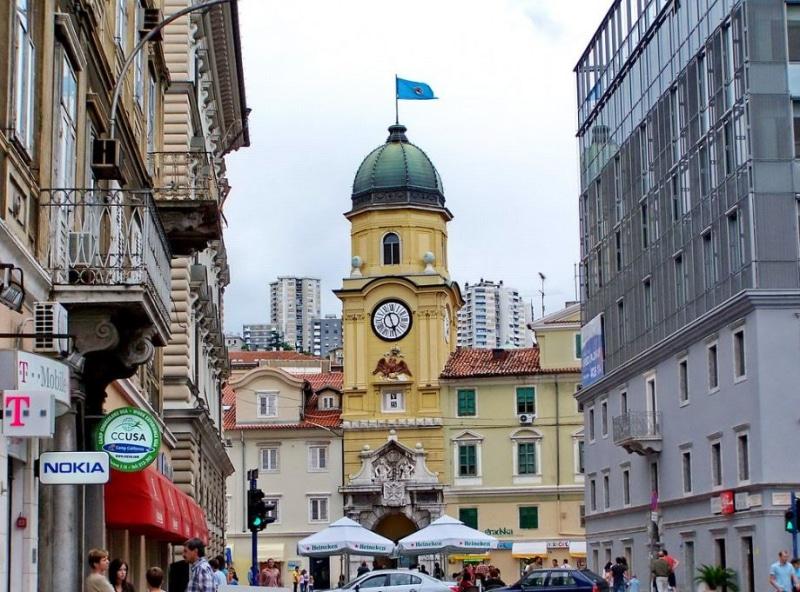
Removed from Unnamed collection
City Tower Rijeka 
City Tower, a symbol of Rijeka and a good example of a typical round tower access-point, which lead into the fortified town. Today it dominates the central part of Korzo, although during its lifetime it was overtopped by more recently constructed buildings.
It was built in the Middle Ages, probably on the foundations of the Late Antique littoral town gates. Some baroque phases of its construction can be seen on the lower part of the front of the Tower, which are characterised by a richly decorated portal, an imperial coat of arms carved out of stone and relief of the Austrian emperors Leopold and Charles VI. Rijeka paid them special respect due to the maritime orientation they introduced into the state policies of the Austrian court. The Tower’s superstructure, on which a city clock has been situated since the 17th century, has been remodelled several times; most significantly at the turn of the 18th century under the guidance of municipal engineer A. Gnamb, the last time was at the end of the 19th century, based on a design by F. Bazarig. http://www.visitrijeka.eu/What_To_See/Monuments/City_Tower
Map
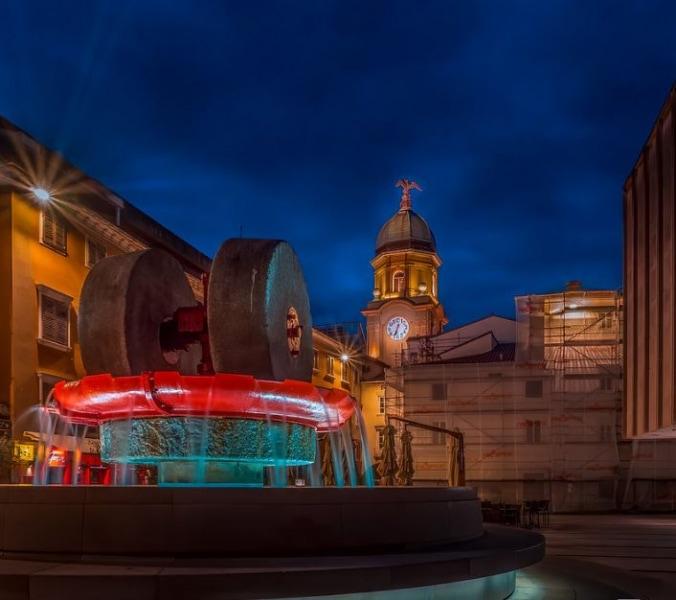
Removed from Unnamed collection
Ivan Kobler Square 
Passing under the round City Tower, the former main medieval town entrance that gave access to the coast, you enter the centre of Rijeka’s Old Town.
Located in the modern-day Ivan Kobler Square, there was once a more compact municipal centre called Placa, which served the significantly smaller fortified medieval town. The most knowledgeable historical interpretations of Rijeka Town present it as vertically elongated, framed to the north and south by the City Tower and the Town Hall, and to the east and west by chains of houses.
The northern part of Rijeka was dominated by the lord's castle, the eastern part featured the main commoners’ church with a cemetery, to the west there was a spacious cloistered enclosure, and here, in the south quarter, near the embankment and the beach market under the town walls, there was the vibrant heart of the Town. There, the citizens of Rijeka would meet to listen to the proclamations of the Town Crier, seal contracts and buy and sell on the open market or in stores situated in the ground floors of houses. Only traces of those houses remain now, with several old walls integrated into more modern buildings, a baroque lintel with the former owner’s coat of arms and an arched underground corn house. In the near past was the former town “Greenmarket” where fruit and vegetables were sold. http://www.visitrijeka.eu/What_To_See/Architecture/Ivan_Kobler_Square
Map
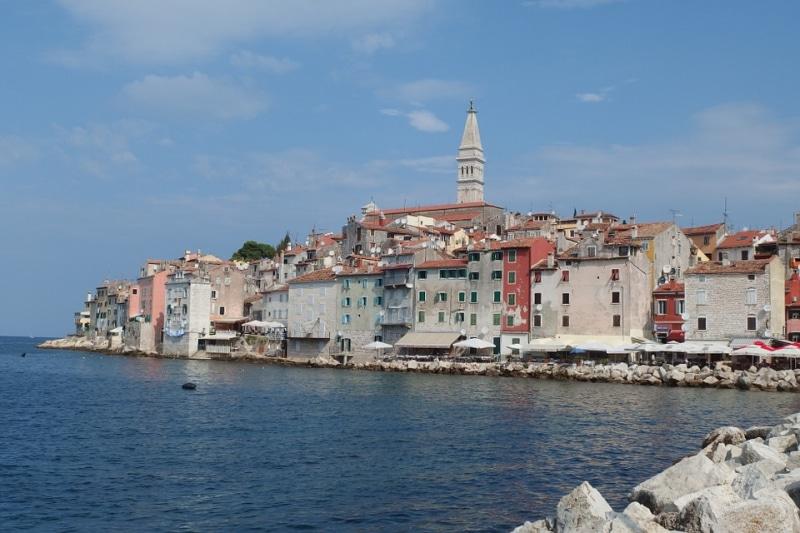
Removed from Unnamed collection
The Old Town 
The Old Town is where life started on what used to be an island secured by medieval walls. The city had seven gates, three of which have been preserved to this day: The Gate of St. Benedict, The Portica and The Gate of the Holy Cross. The first archeological traces of life date back to the Bronze Age, and the old city started developing in the 3rd century. The limited space conditioned the construction of narrow houses, narrow streets and small squares. It's an unique place to visit.
The town clock and a small fountain are located on the main town square. The town clock once represented the tower on the south corner of the former town walls. Built in the 12th century, the tower was extended several times. The town clock with its Venetian lion, the symbol of Serenissima dating back to mid-19th century, was situated on the town gate fort near the Califfi Palace. http://www.rovinj.co/en/meet-rovinj/culture-and-history/
Map
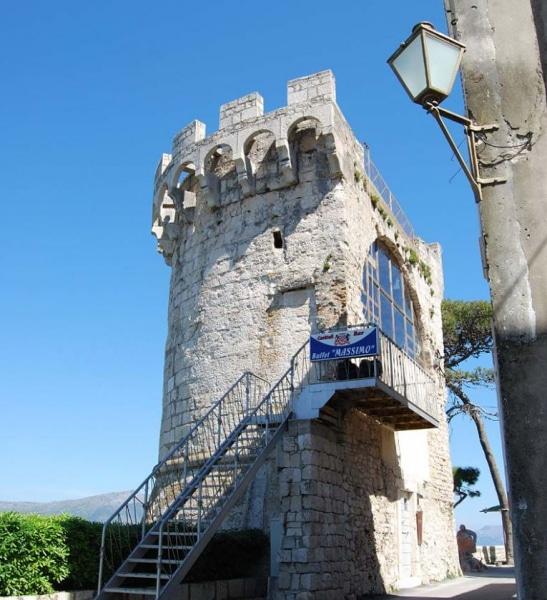
Removed from Unnamed collection
Zakerjan Tower 
Kula Zakerjan (Zakerjan tower), is also named Berim Tower. It stands on the north of Korcula Town (see map below) in the Zakerjan area. The tower was built between 1481 and 1483 under the rule of Giovanni Mocenigo who was doge of Venice from 1478 to 1485.
The tower is shaped like half-cylinder and has similar crenellation – the distinctive pattern that framed the top of the walls of this medieval tower. On the Northside of the tower, facing Peljesac Channel, there is Venetian coat of Arms of Governor Viaro and Doge Mocenigo. On the Southside, facing Korcula Town, above the arch, there is Tiepolo Coat of Arms. The tower was built by the workshop of Marko Andrijic, the local stonemason. Nowadays, Zakrjan Tower houses popular Massimo Bar that serves drinks on the top of the tower’s terrace. https://www.korculainfo.com/towers/zakerjan/
Map
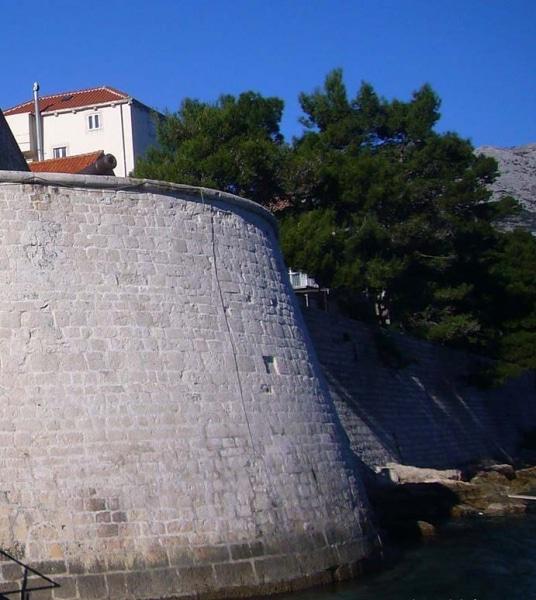
Removed from Unnamed collection
Tower of All Saints 
Tower of All Saints, locally called Kula Svih Svetih is also called Capello tower or Rampada. It is built 1493, as part of 12 Korcula towers. It is located on the South-East part of Korcula Town walls, situated in Rampada street, Zakerjan area. Nowadays, the only basement is left of this tower. It is named after All Saints Church located in its near vicinity. https://www.korculainfo.com/towers/all-saints/
Map
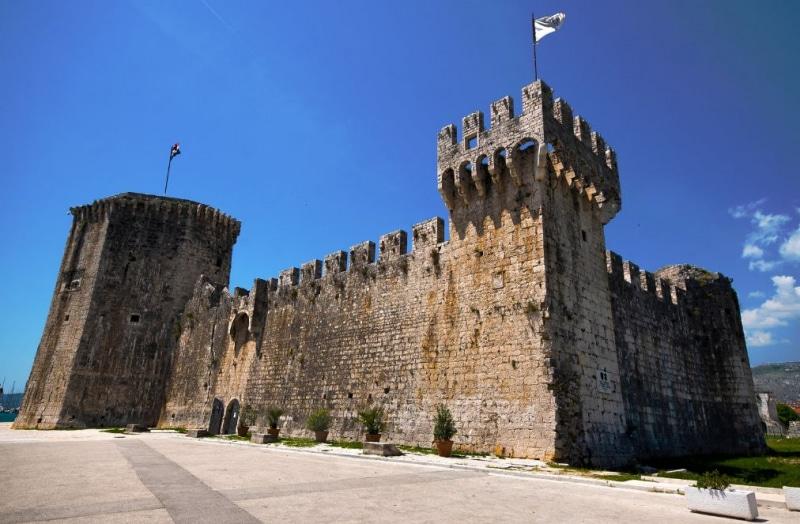
Removed from Unnamed collection
Fortress Kamerlengo 
Fortress Kamerlengo is situated at the west end of Trogir islet, built by Venetians in Xlll - XV century as a naval base for their navy forces in this part of Adriatic. It is named by town Magistrate Camerarius. Nowadays, the fortress is a multimedia centre with open-air cinema and stage for various cultural events. http://www.trogironline.com/virtual_guide/fortress_kamerlengo.html
Map

Removed from Unnamed collection
Lotrscak Tower 
Lotrščak Tower is Zagreb’s fortified tower. It was a part of the southern gate and town defences against the Turks, built in 1266.
Today, it is one of the last remaining fortifications and one of Zagreb monuments. But wait – there’s more, inside the Grič cannon fires every day exactly at noon.
It has been doing that for the last hundred years, as a commemoration of Zagreb’s victory over the Turks. It has become somewhat a tradition, as locals set their watches according to the shot.
The tower was overlooking Zagreb defences for years in the past. As a matter of fact, it got its name by the bell, lat. campana latrunculorum (thief’s bell), which rang every night before the gates closed.
Today, it is overlooking Zagreb and offers spectacular views from its top. We highly recommend it to all who can climb its narrow steps. https://www.visitzagreb.hr/zagreb/lotrscak-tower-gric-cannon/
Map

